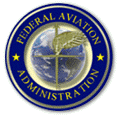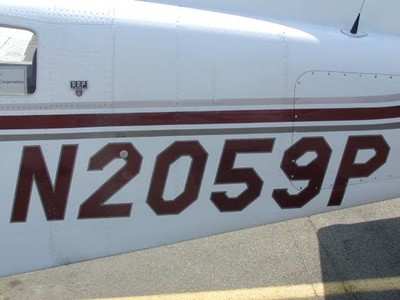Fri, Apr 23, 2004
AOPA To FAA: Don't Mandate Big N-Numbers
 AOPA on Monday told the FAA to
reject a petition from a group called Stop the Noise, asking for
mandatory under-wing display of two-foot-high N numbers so aircraft
could be more easily identified. AOPA told the FAA that requiring
aircraft owners to put large N numbers on the undersides of their
wings would serve no purpose and that the FAA has its own studies
that already prove the point.
AOPA on Monday told the FAA to
reject a petition from a group called Stop the Noise, asking for
mandatory under-wing display of two-foot-high N numbers so aircraft
could be more easily identified. AOPA told the FAA that requiring
aircraft owners to put large N numbers on the undersides of their
wings would serve no purpose and that the FAA has its own studies
that already prove the point.
"The Stop the Noise petition is an argument that's already been
made and lost," said AOPA President Phil Boyer. "It's a transparent
attempt by this group to have the FAA make it easier for Stop the
Noise to sue pilots, something we strongly oppose."
 "Our opposition to this proposal is
based on a number of factors but focuses on the FAA's previous
determination that larger registration numbers would not assist
those on the ground in the identification of aircraft, as stated in
the Stop the Noise proposal," wrote AOPA Director of Regulatory and
Certification Policy Luis Gutierrez in formal comments on the
petition.
"Our opposition to this proposal is
based on a number of factors but focuses on the FAA's previous
determination that larger registration numbers would not assist
those on the ground in the identification of aircraft, as stated in
the Stop the Noise proposal," wrote AOPA Director of Regulatory and
Certification Policy Luis Gutierrez in formal comments on the
petition.
Gutierrez also poked holes in the Stop the Noise argument that
under-wing N numbers would aid in national security. Gutierrez
reminded the FAA that the current requirement for 12-inch
registration numbers is at the request of the Department of
Defense. AOPA's comments also note that the under-wing ID would be
"irrelevant" to military aircraft trying to intercept and identify
a general aviation aircraft because "procedures outlined in the
Aeronautical Information Manual do not provide for interception and
identification from below."
Gutierrez also noted that the issue of the size of aircraft
registration numbers has been around for at least 50 years. But he
pointed out that as early as 1960, the FAA determined that "'unless
the aircraft is flying at an appropriate altitude, attitude, and
speed; the observer is located directly below the flight path; it
is during daylight; and weather conditions are favorable, these
marks are of little value in effecting positive ground-to-air
identification.'"

Again in 1977, in response to another petition for under-wing N
numbers, Gutierrez notes, the FAA said that the markings are useful
for identification "only under ideal conditions."
"Nothing in their petition alters the FAA's earlier findings, so
the agency should reject this request."
More News
Also: B-29 Superfortress Reunion, FAA Wants Controllers, Spirit Airlines Pulls Back, Gogo Galileo Van's Aircraft posted a short video recapping the goings-on around their reorganiz>[...]
Light Gun A handheld directional light signaling device which emits a brilliant narrow beam of white, green, or red light as selected by the tower controller. The color and type of>[...]
"The journey to this achievement started nearly a decade ago when a freshly commissioned Gentry, driven by a fascination with new technologies and a desire to contribute significan>[...]
"Our driven and innovative team of military and civilian Airmen delivers combat power daily, ensuring our nation is ready today and tomorrow." Source: General Duke Richardson, AFMC>[...]
Aircraft Conflict Predicted conflict, within EDST of two aircraft, or between aircraft and airspace. A Red alert is used for conflicts when the predicted minimum separation is 5 na>[...]
 Airborne 04.16.24: RV Update, Affordable Flying Expo, Diamond Lil
Airborne 04.16.24: RV Update, Affordable Flying Expo, Diamond Lil ANN's Daily Aero-Term (04.20.24): Light Gun
ANN's Daily Aero-Term (04.20.24): Light Gun Aero-News: Quote of the Day (04.20.24)
Aero-News: Quote of the Day (04.20.24) Aero-News: Quote of the Day (04.21.24)
Aero-News: Quote of the Day (04.21.24) ANN's Daily Aero-Term (04.21.24): Aircraft Conflict
ANN's Daily Aero-Term (04.21.24): Aircraft Conflict





